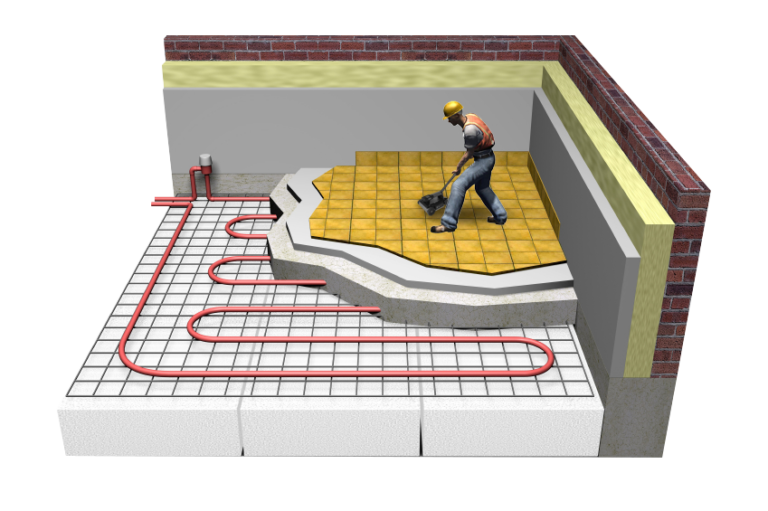The Relevance of Exact Concrete Scanning in Finding Underground Hazards
The capacity to precisely identify and map these underground threats is not merely an issue of ease yet an important facet of guaranteeing the safety and security of both construction employees and the honesty of the job itself. By releasing advanced scanning innovations and techniques, experts can reveal hidden dangers, stop costly damages, and inevitably pave the method for smoother and much safer building and construction endeavors.
Advanced Scanning Technologies for Detection
Sophisticated radar systems are revolutionizing the field of underground detection by offering unrivaled accuracy and efficiency. These advanced scanning innovations use ground-penetrating radar (GPR) to develop detailed photos of subsurface frameworks, offering insights into what lies underneath the surface area with impressive quality. By releasing high-frequency pulses right into the ground and gauging the representations, radar systems can identify variants in product make-up and detect underground hazards such as pipes, cables, and voids.
One of the essential advantages of these advanced radar systems is their non-invasive nature, permitting extensive assessments without triggering damage to the existing structures. This not only ensures the safety of the surrounding environment yet likewise reduces the need for costly repairs or disruptions to recurring building and construction jobs. Additionally, the real-time information supplied by these scanning innovations enables fast decision-making and improves general project performance.
Relevance of Subsurface Mapping

Accurate subsurface mapping helps in preventing costly problems to existing below ground framework, minimizing the danger of mishaps, and preserving job timelines. It allows job managers to make informed choices pertaining to website planning, equipment deployment, and source allotment. Additionally, subsurface mapping enables for much better sychronisation among different teams servicing a job and aids in conforming with regulative requirements associated with below ground utility discovery.
Mitigating Dangers in Building Projects
Reliable danger mitigation approaches are necessary for ensuring the success and security of building and construction tasks. One essential element of mitigating threats in construction jobs is detailed planning and assessment at the preliminary phases.
In addition, developing clear interaction networks amongst all project stakeholders and guaranteeing stringent adherence to safety and security methods are vital components of risk mitigation. Routine evaluations, top quality control measures, and monitoring of work progress can help in identifying and dealing with any type of emerging risks quickly. Additionally, having contingency plans in location for unforeseen difficulties can substantially minimize the effect of interruptions on the job. By proactively executing robust risk mitigation strategies, construction projects can decrease hold-ups, expense overruns, and security events, ultimately leading to effective task results.

Stopping Pricey Damages and Delays
To reduce financial losses and task obstacles, efficient techniques must be applied to stop expensive problems and delays in construction tasks. Determining these obstructions early on aids in preparing the project format much more efficiently and staying clear of prospective problems during excavation.
Additionally, purchasing training programs for building and construction workers on the importance of concrete scanning and secure find more excavation methods can significantly minimize the risk of crashes and delays. Clear interaction channels between job managers, designers, and on-site workers are likewise necessary to make certain that everybody understands the potential threats and follows the needed protocols to avoid pricey problems. By prioritizing positive actions like concrete scanning and promoting a society of safety and security and understanding, building and construction projects can lessen the economic impact of unforeseen below ground obstructions and stay clear of costly hold-ups.
Ensuring Safety And Security of On-Site Personnel
By click this link prioritizing positive actions such as comprehensive training programs and clear communication networks, building and construction projects can guarantee the security of on-site employees amidst the prospective threats spotted with concrete scanning. Appropriate training outfits employees with the expertise and skills needed to navigate construction sites safely, particularly when threats are identified through scanning processes. Training ought to cover danger acknowledgment, emergency situation treatments, and the appropriate use of individual safety devices to alleviate dangers successfully.
In addition, developing clear interaction networks is critical for sharing details concerning recognized threats without delay. This makes certain that all on-site employees understand prospective risks and can take necessary precautions to stay clear of crashes. Routine security briefings, toolbox talks, and regular updates relating to scanning results assistance keep everyone educated and positive in preserving a risk-free workplace.
In addition, carrying out stringent adherence to safety methods and guidelines, conducting normal security audits, and promoting a society of security consciousness amongst employees are crucial components in making certain the wellness of on-site personnel throughout construction tasks - RainierGPR Concrete Scanning. Positive safety actions not only shield workers from injury however likewise contribute to the general success and efficiency of the task
Conclusion
In verdict, accurate concrete scanning plays an essential duty in discovering below ground risks. Making use of sophisticated scanning modern technologies and subsurface mapping aids reduce threats in construction tasks, preventing expensive problems and delays. By making sure the safety of on-site workers, exact scanning can significantly enhance the performance and success of construction procedures. It is necessary for construction business to focus on the use of exact scanning methods to reduce official source prospective threats and ensure a smooth building procedure.
By proactively carrying out durable danger mitigation strategies, construction tasks can decrease hold-ups, expense overruns, and safety incidents, inevitably leading to successful job results. - RainierGPR Concrete Scanning
To reduce financial losses and task obstacles, efficient strategies must be applied to stop expensive problems and hold-ups in construction tasks. By focusing on proactive actions like concrete scanning and advertising a culture of safety and security and understanding, construction tasks can lessen the financial influence of unforeseen below ground obstructions and stay clear of expensive delays.
By focusing on proactive actions such as thorough training programs and clear interaction channels, building projects can make sure the safety of on-site employees amid the possible hazards identified with concrete scanning. Making use of advanced scanning modern technologies and subsurface mapping helps alleviate risks in building and construction tasks, stopping costly problems and hold-ups.